SMS480 Midterm First 2 weeks (vocab, history of life on earth)
1/196
There's no tags or description
Looks like no tags are added yet.
Name | Mastery | Learn | Test | Matching | Spaced |
|---|
No study sessions yet.
197 Terms
Biology
Study of life
Zoology
Branch of biology that deals with animals and animal life, including the study of the structure, physiology, development, and classification of animals
Invertebrates
-Multicellular animals without a vertebral column
-97% of all animals on the planet
Prokaryote
Single-celled organism without a nucleus, mitochondria, or other membrane-bound organelles
-Prokaryotes emerges abt 3.5 gya
Oceans formed from. . .
Volcanic release of water vapor
Icy comets and asteroids
Condensation
Planetary cooling
Hot acid rain for millenia
Salty from rock weathering
Metazoa
Ingestive, heterotrophic, sexual, multicellular eukaryotes that undergo tissue formation
Animalia emerged around 875-650 mya (around time of oxygen stabilization)
Late Paleozoic
Abt 270 mya
Pangea
Permian Extinction (Great Dying)
90% species go extinct (shallow, coastal ecosystems hit hardest)
10 million year recovery for shallow systems (longer for deeper)
Post-Great Dying
Uniformly warm
Pangea breaks apart—> circumglobal Tethys sea (Gondwana and Laurasia)
Rising sea level, inland water masses, atm cooling, O2 mixing
Reef-forming corals (Sclaractinians)
Predatory fishes and inverts increase in shallow coastal
Cenozoic Era
Abt 66mya-present
Cooling
Modern continents
Paleocene-Eocene Thermal Maxima (56 mya, greenhouse gases)
Adaptive radiation: Opportunistic, small-bodied generalist survivors repopulate devastated niches
Monophyletic
Groups/clades include all descendants of a stem species
Paraphyletic
Group that has the same evolutionary origin, but does not include all the descending groups
Polyphyletic
Composite groups of organisms without true biological rationale/shared biological ancestor (eg. slug, microbe, etc)
Apomorphy
Evolutionary innovation present in a biological lineage, but not within its ancestral group
Synapomorphy
Shared apomorphy with 2 or more groups of organisms
Kingdoms of Life
Bacteria: No membrane enclosed organelles or nuclei; no cytoskeleton (prokaryotic)
Archaea: Anaerobic and aerobic, methane-producing organisms, no membrane enclosed organelles or nuclei, no cytoskeleton (prokaryotic)
Protista: Unicellular eukaryotes, no embryological layering, have nucleus, endomembrane, cytoskeleton, and mitochondria
Fungi: Chitinous wall around vegetative fungal cells (eukaryotic)
Plantae: Unicellular, multicellular, photosynthetic (eukaryotic)
Animalia: Multicellular, heterotrophic, tissue layering eukaryotes
Niche
Set of all the conditions of a single species in a certain environment
Fundamental niche
Complete range of environmental conditions where a species could survive, grw, and reproduce if there were no interspecific interactions
Realized niche
Actual range of environments used by a species, part of the fundamental niche
Interspecific interactions shape habitat use
Niche partitioning
Process by which similar species evolve to use different resources or inhabit different parts within the same environment
Continental shelf
0-1000km from shore
Less than 200 m deep
High biological productivity
Continental edge
Rapid change in bathymetry
Transition from shelf to slope
Continental slope
Slope of 4—6%
200-3000m deep
Abyssal plain
No light
Over 3000m deep
Productivity by chemosynthesis
Ocean zones/water column
Splash/supratidal: Above mean high tide, only flooded during largest tides and storms
Intertidal/eulittoral: Dynamic area where ocean meets the land (between high and low tide)
Subtidal/sublittoral: Below low water, never uncovered
Neretic: Pelagic over continental shelf
Oceanic: Pelagic over continental shelf and beyond
Amount of light (ocean zones)
Photic: Enough sunlight for photosynthesis (0-200m)
Aphotic: Not enough light for photosynthesis
Disphotic: Twilight zone, transition region between photic and euphotic
Critical depth
Depth where net photosynthesis is less than net respiration
Compensation depth
Depth where rates of respiration and photosynthesis are equal
Reynolds number (Re)
Dimensionless term that describes fluid flow patterns in different physical situations
Ratio of inertial to viscous forces acting on an object within a fluid
Greater than 1: inertial forces dominate
Less than 1: Viscous forces dominate
Smaller—> lower Re—> living in a viscous world
Epifauna/epibenthic
Live on top of sediment/substrate
Infaunal
Live within sediment
interstitial
Interstitial
Live between sand grains
Meiofauna: Organisms less than 0.5mm
Errant
Active, motile
Sessile
Firmly attached to substrate
Sedentary (benthic)
unattached/weakly attached but do not move much
Holoplanktonic
Holo=whole
Organism that remain in the plankton for their entire life cycle
Meroplanktonic
Mero=part
Organisms are temporary members of the plankton community, typically during early development
Choanoflagellata
Likely ancestral group of Metazoa
Near identical morphology of choanoflagellates and sponge choanocytes
Capacity ot colonize
DNA similarities
Cilia
Shorter, more abundant
Useful for low Re living
Digestion, feeding, gas exchange, reproduction
Flagella
Fewer, longer
Useful for low Re living
Digestion, feeding, gas exchange, reproduction
SA:V Dilemma
diffusion needed to transport nutrients and remove waste
Oxygen diffusivity only 1mm into tissues before fully utilized
Remedied through. . .
Folding, flattening, thread-like (increase SA)
Keep important things near cell surface
Multicellularity
Multicellularity
Solves SA:V dilemma by bringing environment closer to cell:
folded cell and tissue layers
Internal transport mechanisms
Organs
Ontogeny
Process by which unicellular zygotes transform themselves into multicellular individuals and eventually into reproducing adults
Embryogenesis
Growth and development of the embryo
Animal-vegetal axis
How egg cells are polarized
Animal: future head/dorsal side, fewer/smaller yolk cells
Vegetal: Future posterior/ventral side, more abundant/larger yolk cells
Egg types
Isolecithal
Telolecithal
Centrolecithal
Isolecithal
Small yolk, evenly distributed
Telolecithal
Yolk concentrated in one end
Centrolecithal
Yolk concentrated at the center
Vitellogenesis
Yolk production
Longest phase of egg production
High energy deman
Zygote
Fertilized egg
Blastomeres
Resulting cells of initial division of zygote (cleavage)
Cleavage types
Holoblastic
Meroblastic
Holoblastic
Cleavage planes pass completely thru cell, blastomeres fully separated by thin membrane
Isolecithal
Weak-moderate telolecithal

Meroblastic
Cleavage planes do not pass completely through the cell, blastomeres are not separate
Strongly telolecithal

Cleavage plane types
Longitudinal: Pass thru or parallel to A-V axis
Transverse: Passes at right angles to A-V axis
Macromeres
Name for the larger cells at vegetal pole during spiral cleavage
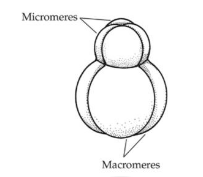
Micromeres
Name for the smaller cells at animal pole during spiral cleavage
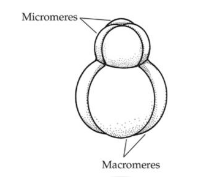
Dextrotropic
New cells displaced clockwise during spiral cleavage
Levotropic
New cells displaced counterclockwise during spiral cleavage
Radial cleavage
Strictly longitudinal and transverse divisions, blastomeres arranged in rows either perpendicular or parallel to the A-V axis

Spiral cleavage
During transition from 4 to 8 blastomeres, embryonic cell division generates successive blastomeres diagonally, creating a ‘spiral’ arrangement around A-V axis
Dextrotopic
Levotropic
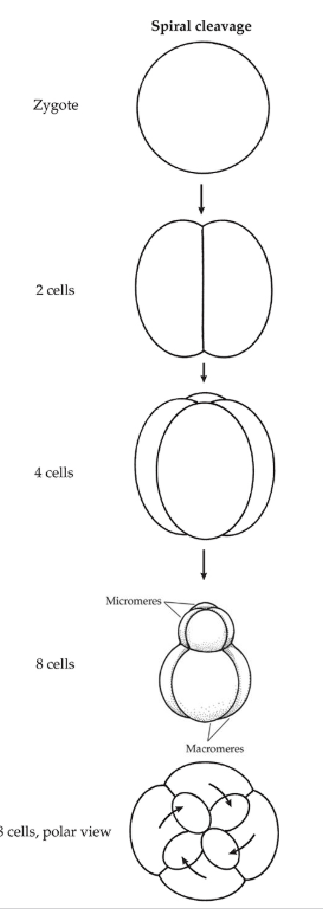
Cell fates
Determinate cleavage
Indeterminate cleavage
Fate maps
By about 104 cells, terminal tissues are assigned to distinct ‘regions’ of cells
Determinate cleavage
Cell fates established very early in development
Early as 2-4 cells
Mosaic ova: Cell removal leads to abnormal development
Indeterminate cleavage
Cell fates not established until late in development
Regulated ova: Cells can “regulate” for lost cells and normally develop
Blastula
Embryonic stage preceding the formation of embryonic germ (tissue) layers
Coeloblastula
Steroblastula
Discoblastula
Periblastula
Coeloblasula
Hollow ball of cells, usually 1 cell layer thick
Blastocoel

Blastocoel
Space within blastula/primary body cavity
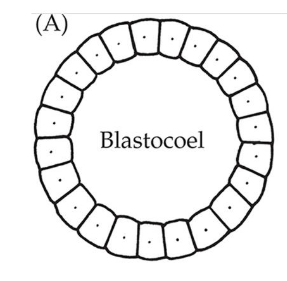
Steroblastula
Solid ball of blastomeres
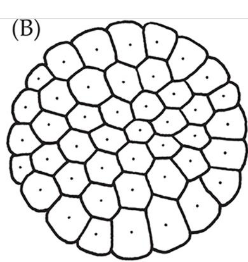
Discoblastula
Cap/disc of cells at the animal pole
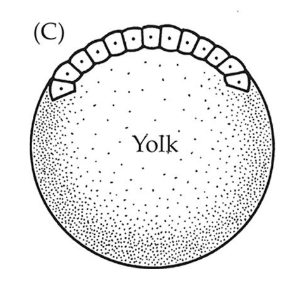
Periblastula
‘Hollow’ ball of cells retaining a non-cellular yolk
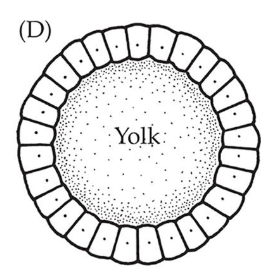
Gastrulation
Formation of embryonic germ layers and the resulting embryo—> forms initial sheet of cells
Process that separates Metazoa from Protista
Germ layers
Ectoderm
Mesoderm
Endoderm
Ectoderm
Outer layer
Nervous system
Outer skin and derivatives
Mesoderm
Middle layer
Coelomic lining
Circulatory structures
Internal support structures
musculature
Endoderm
Inner layer
Gut and associated structures
Forms of gastrulation
Invagination
Ingression
Delamination
Epiboly
Involution
Invagination
Formation of internal pouch near vegetal pole as a sac within blastocoel
Forms archenteron and blastopore
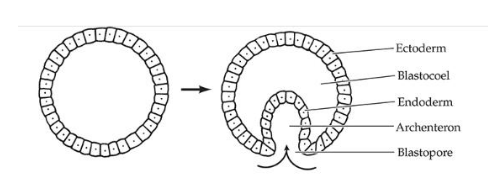
Archenteron
Embryonic gut
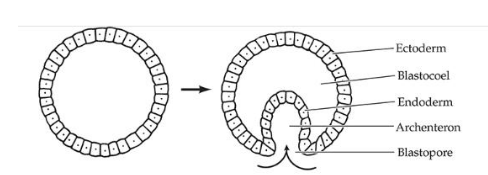
Blastopore
Opening to outside of gastrula
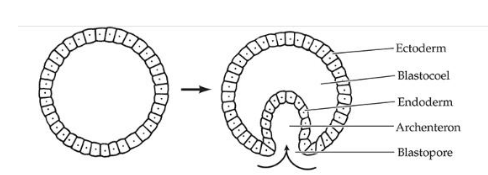
Ingression
Cells detach from internal wall into blastocoel, cells divide until full

Delamination
Forms a layer of endoderm surrounded by a layer of ectoderm

Epiboly
Layering on cellular layers (like an onion)

Involution
Discoblastula cap forms a layer of cells underneath original

Germ layers
Embryonic tissues that form the framework upon which the Metazoan body plans are constructed
Interdependent, specialized, coordinated, and orchestrate tissue layering during embryogeny
Diploblastic
2 germ layers (endo and ecto)

Triploblastic
3 layers (endo, ecto, meso)

Grades of triploblastic Metazoa
Acoelomate
Blastoceolomate/Pseudocoelomate
Coelomate/eucoelomate
Acoelomate
No cavity
Mesoderm forms solid mass of tissues
Sometimes with small open spaces
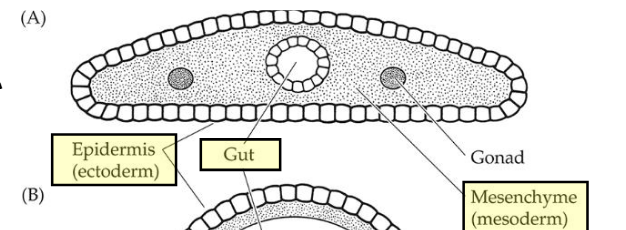
Blastocoelomate/Psuedocoelomate
Fluid-filled body cavity (psuedocoel)
Not fully lined by mesodermal tissue
Internal organs float freely
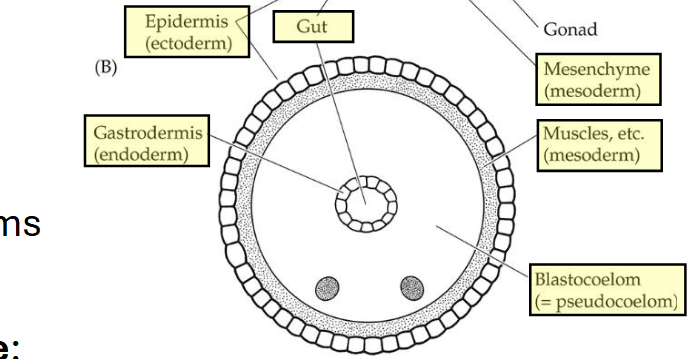
Coelomate/Eucoelomate
Fluid-filled body cavity lined with mesoderm
Gut lining (peritoneum) attaches to organs and separates them from coelomic space
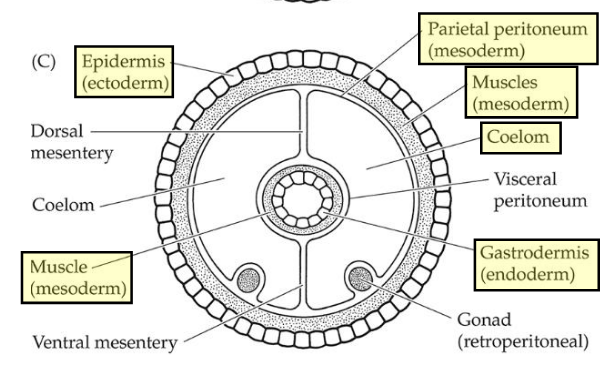
Coelom formation
True mesoderm derived from endoderm
Schizocoely
Entercoely
Schizocoely
Internally-aired packets split
schizo=to split
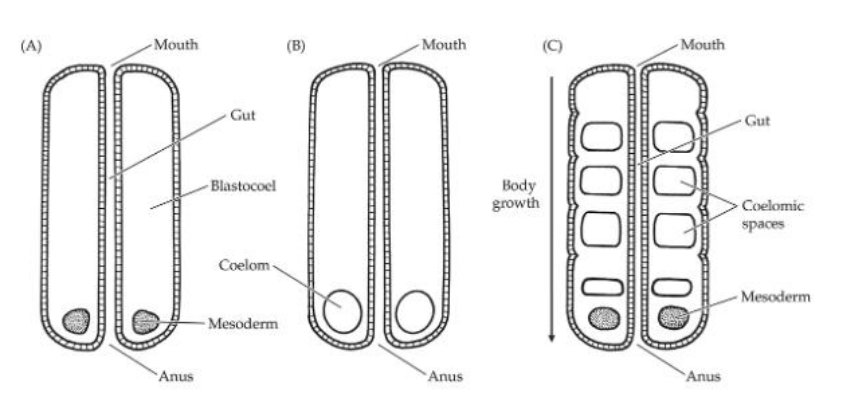
Enterocoely
“Pouching”
Entero=intestine

Mesoderm body plan innovations
Locomotion
Muscles and skeletons
Feeding and digestion
Excretion and osmoregulation
Circulation and gas exchange
Nervous system and sense organs
Reproduction
Types of locomotion
Ameboid
Ciliary/flagellar
Hydrostatic propulsion
Locomotor limb movement
Ameboid
Change cellular shape to generate asymmetrical movement
Ciliary/flagellar
Hair-like organelles move to generate fluid currents
Hydrostatic propulsion
Soft-bodied, fluid-filled cavities move using pressure
Locomotor limb movement
Muscles to move